Smart Doorbells are quickly becoming a must-have home gadget. They are relatively inexpensive, consumer-friendly to use and as easy to install (in most situations) as hanging a picture frame. Google has been playing in the Smart Doorbell space for a while now with the Nest Hello, this year they released the long-awaited successor, the Nest Doorbell (battery). Which as you may have guessed includes an inbuilt battery.
The battery allows even easier installation for those who don’t have an existing wired doorbell or had planned AC power in advance. So how does the Nest Doorbell 2021 edition stack up? Read on to find out.
WHAT’S INSIDE?
In the box you get the IP54 rated Doorbell, charging cable (no wall plug), the mounting kit, a 20-degree wedge, the AC adapter kit and a sticker to warn approaching humans that there is a camera and microphone present.
The doorbell itself is slightly larger than the previous model, a little thicker and of course heavier. All of this extra size and heft is to accommodate the battery which Google expects to last about 2.5 months of ‘typical’ use.
In Australia, your colour choices are limited to Snow (white) and that’s it. Internationally Google also offers Ash (grey), Ivy (green) and Linen (beige) options, so if you wanted a splash of colour to suit your house, then you may have to look at importing an international model.
Doorbells aren’t really about the specs, except of course for the camera. The single 1.3 MP 6 x digital zoom 3:4 camera is able to capture up to HD quality in 960 x 1200 30 FPS. This provides a more than ample and crisp view from the door. The camera also includes night vision for low light recording and a 145-degree field of view. Depending on where you mount the doorbell that’s more than adequate.
The Doorbell also includes two way audio with an internal speaker and microphone, a PIR motion sensor for proximity sensing. The doorbell can be AC powered but its 6Ah battery provides great flexibility.
WHAT’S IT GOOD AT?
What we’re looking for out of a Smart Doorbell is relatively simple. First and foremost it has to replace a standard doorbell and actually announce someone is at the door. After that, we are looking at smart features, video quality, two-way communication and security features.
Nest Doorbell as a doorbell

If you are installing the Nest Doorbell as a replacement for an existing chime enabled hardwired doorbell then the Nest will sound your chime whenever the button is pressed. It’s a simple one for one replacement with a lot more functionality on the back end.
If however, you do not have a chime, or even if you do then you have a few options. The easiest and best is the Nest Doorbell’s integration with the Google Home ecosystem. When the doorbell is pressed you get about a 5 second lag and then all of your Google smart speakers and displays announce “Someone is at the door” or whatever you named the device.
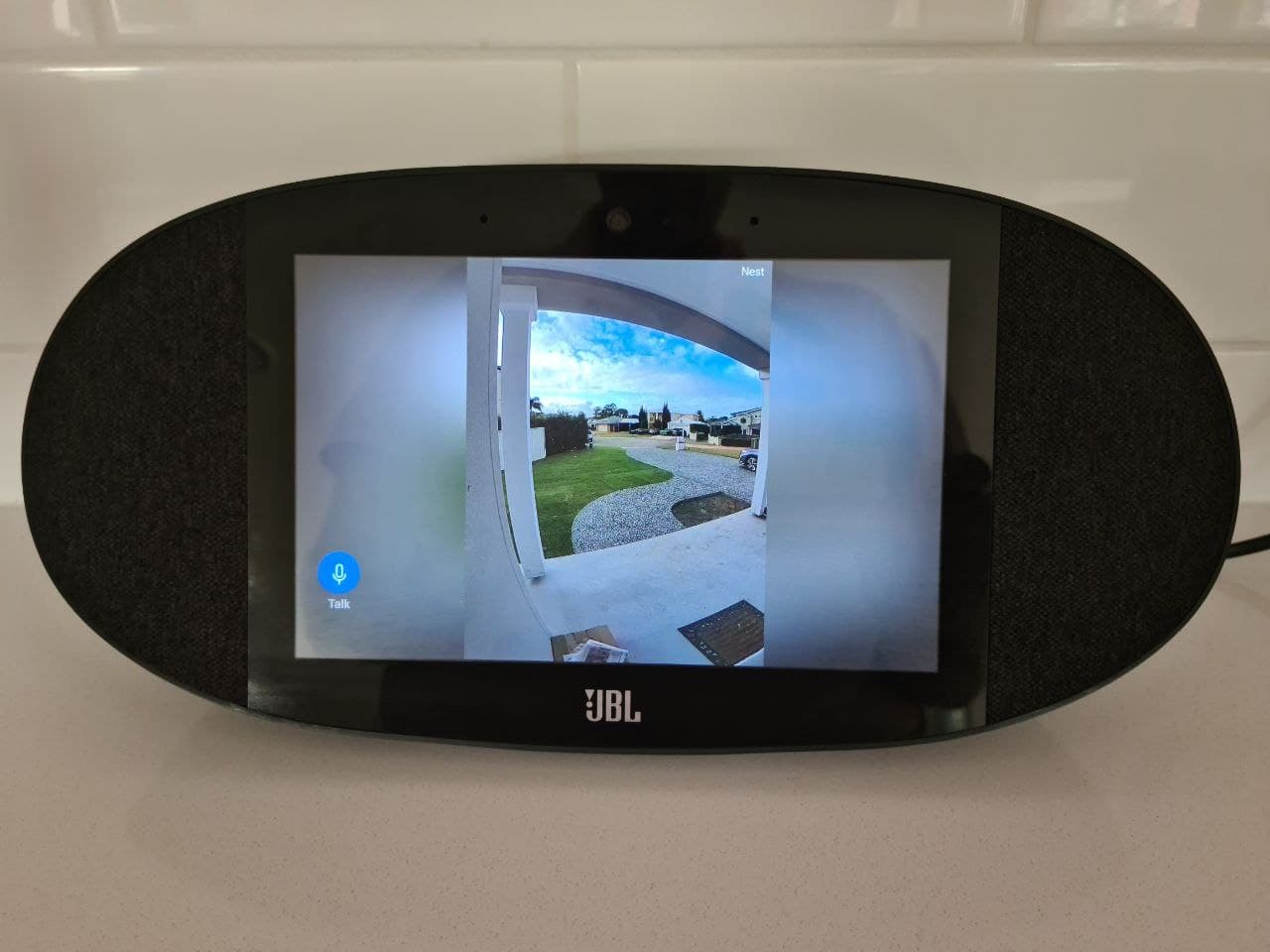
For smart displays, you can ask Google to show you the video, and after another period of lag, you will get a video feed and two-way audio communication with whoever is at the door. In my testing, I found the lag was long enough that most people had started to walked away from the door before I could speak. I’d like to see the camera UI launch on a doorbell button press for smart displays at least.
The second option is pairing with your phones and tablets. When the doorbell is pressed you’ll get a notification on your phone. This is the same with all Nest Doorbell notifications for people, object and motion detection, so I choose to configure the Doorbell press differently in the notification centre.
Only a physical doorbell press will break through my phone’s permanent Do Not Disturb mode and actually trigger a ring tone. This effectively turns my phone into a portable doorbell chime, with worldwide coverage, and is very handy, I even answered the door from within my roof.
While I find the announcement through my many Google smart speakers and displays more than an adequate option, I would prefer if they all announced in unison, but seeing as Google can’t get that working for broadcasts that may be dreaming too big. It would be good if Google sold a separate chime accessory. many video doorbells offer standalone wireless chimes that plug into a wall socket, hopefully, Google follows suit.
Video, object detection and security
The big advantage a smart doorbell has over a traditional doorbell is the integration of Video. This provides context to what is happening at the door but also the option for new features.
Upfront the Nest Doorbell can operate as a simple security camera, it detects motion, it records. Out of the box the Nest Doorbell records only 3 hours of event history. That’s 3 hours of total footage that delete the oldest footage as space runs out. If you have a Nest Aware subscription (more on that later) then those events are saved to the cloud for 30 days minimum.
Of course in this world of Machine Learning (ML), a simple video recording is barely table stakes anymore. The real power of the Nest Doorbell comes in its ML-powered Smart features. The Nest Doorbell can identify and notify you about detected movement, people, vehicles, animals and packages. All of this is processed on a device with an inbuilt MI model without ever sending the video data to the cloud. For those concerned with privacy, this is a great feature.
Using the Home app you can highly customise how the Nest Doorbell monitors and notifies you of what it’s seeing. You can toggle on or off detection for People, Packages, Animals, Vehicles and motion.
Further to this however you can set “zones” on the camera feed to vary what notifications you get. For instance, on my set up I have the entire camera feed scanning for people and notifying me if they are detected. I think have a secondary zone that monitors my property boundary for packages, animals and Vehicles.
Finally, I have an alert zone directly monitoring my entryway, if any motion is detected there I get an immediate notification. I have considered customising my do not disturb settings to allow these notifications through.
This essentially has turned the Nest Doorbell into a front yard century, with it monitoring different regions of the property for different potential security threats.
Person Detection and familiar faces
One of the best features of the person detection feature is ‘familiar faces’. Using familiar faces you can teach the Nest Doorbell who anyone is and have the camera recognise them, but even cooler the doorbell announce them.
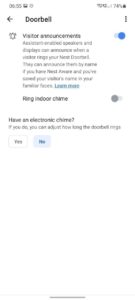
When my daughter gets home from school I get a notification, “Hannah detected”, if my mum presses the doorbell, all of the Google smart devices announce, “Linda’s at the front door”.
Despite the face detection being on the device, if you want to use familiar faces then you must have an active subscription or trial to Nest Aware. There doesn’t seem to be any technical reasons for this, it’s just a toll gate.
Package Detection
Package detection would be the least complete feature of the Nest Doorbell. For my money, a package would be typified by an object that was placed stationary on the ground, which is different to the base footage.
Unfortunately, a package seems to be anything you are carrying, and you don’t have to set it down for it to be detected. A basket of ironing, a handbag, and a mopping bucket are all examples of packages that the Nest Doorbell detected, and then told me were missing.
I am close to turning off object detection for two reasons, firstly the functionality does not seem to add value to me and all of the notifications about non-packages makes me ignore all package features. Secondly, my installation doesn’t actually show the ground where packages are, so it is actually useless for that purpose.
If you want to use package detection I recommend testing the video feed before installing to make sure you can see where packages will be left.
Nest Aware
Storage subscriptions are common for video security devices like video doorbells. We think it’s reasonable that companies charge for service such as this, all of that online storage isn’t free after all.
We do however have mixed feelings about premium features for hardware benign locked behind a subscription paywall. Familiar faces is certainly a premium feature, however, considering that the processing happens on-device it is a stretch to bundle that into a storage subscription.
For those of us in the Google ecosystem, this feels like nickel and diming, perhaps if Google One subscribers also got the feature it would feel less like a cash grab. In the end, the Nest Doorbell core functionally isn’t affected by the feature so it’s hard to rail too hard against it.
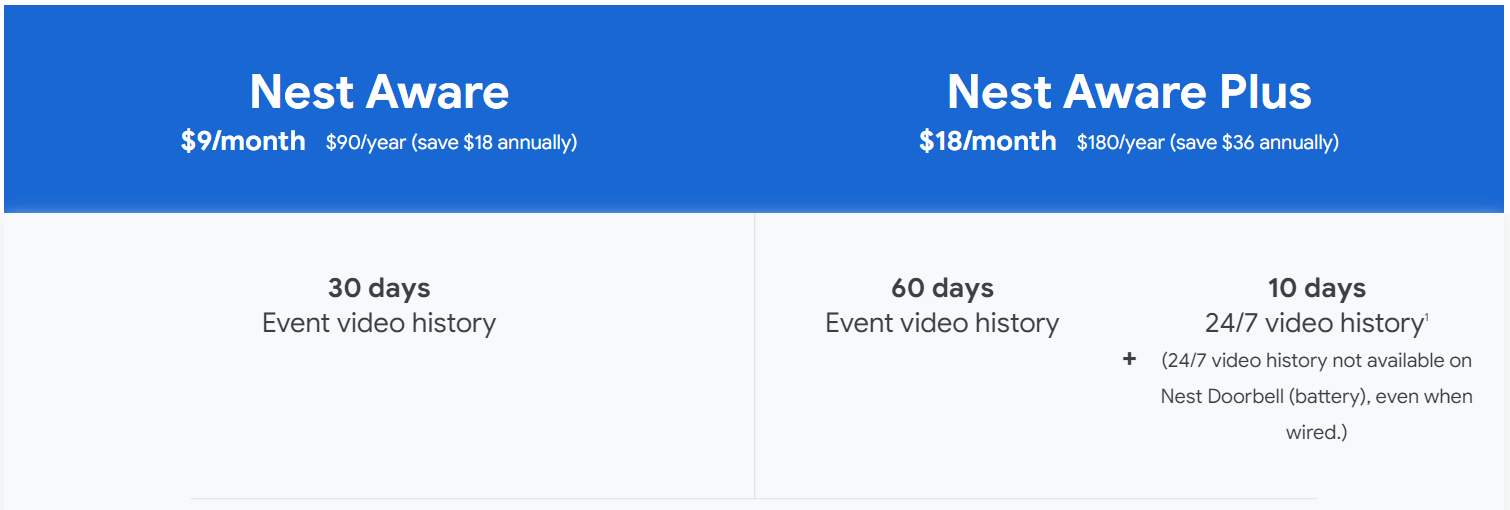
Nest offer two subscription options, Nest Aware for AUD$9/ month for $90/ year which offers 30 days event video history for unlimited cameras. Nest Aware Plus for AUD$18/ month or $180/ year which offers 60 days event video history and 10 days of 24/7 video feeds for unlimited cameras.
Unfortunately, the Nest Doorbell (battery) does not offer the option for 24/7 video recording, even when hardwired. As such we can see very little reason to subscribe to that level if you’re wanting event recording unless you have other Nest cameras of course.
CONCLUSION
Overall the Nest Doorbell (battery) is a meaningful upgrade to the original video doorbell offered by Google. The addition of a better option makes it more versatile for more users and the simple install means that even the most basic of handypeople could install it.
As doorbell the device is great, assuming you have an existing chime unit, a house full of Assistant-powered smart devices, or you’re happy with your Doorbell presses going through your phone. We’d recommend having at least one Google Smart speaker if you don’t have a chime unit, Nest Minis are inexpensive and easy to get.
Smart feature-wise the Nest Doorbell offers everything you could want from a Doorbell, with event-related security recording, two-way audio, Machine Learning based smart detection and customisable notifications the Nest Doorbell is a great home monitoring device.
For those in the Google ecosystem, Nest offers seamless integration into smart speakers and Displays, as well as a full feature integrated into the Google Home App. At AUD$329 full retail the Nest Doorbell is priced at the higher end of the market, but not unaffordably so.
Is the Nest Doorbell for you? Well if you’ve been wanting a Video Doorbell, and have the money to spare I have found the crystal clear video and audio outstanding, the integrated and customisable notifications invaluable and the overall integration into my Googley life excellent.
With the device offering some onboard event storage meaning you don’t have to have a paid subscription to get functionality out of the device we’d give the Nest Doorbell (battery) 2021 edition a solid buy.
Disclosure Statement
As this device required hardwired installation Google has allowed Ausdroid to retain the review unit

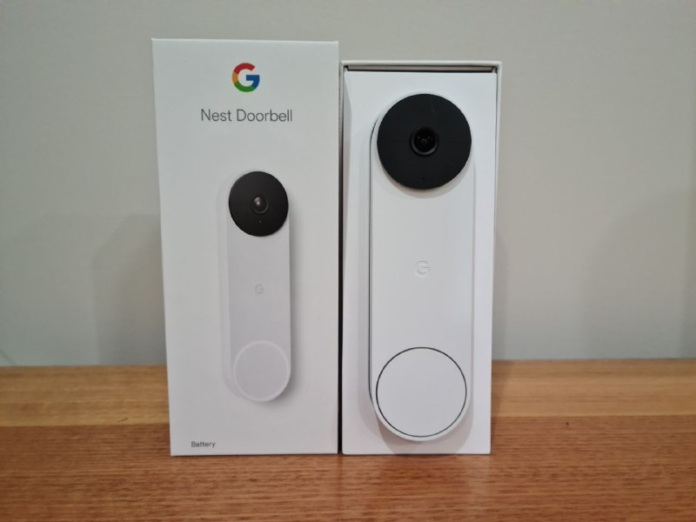

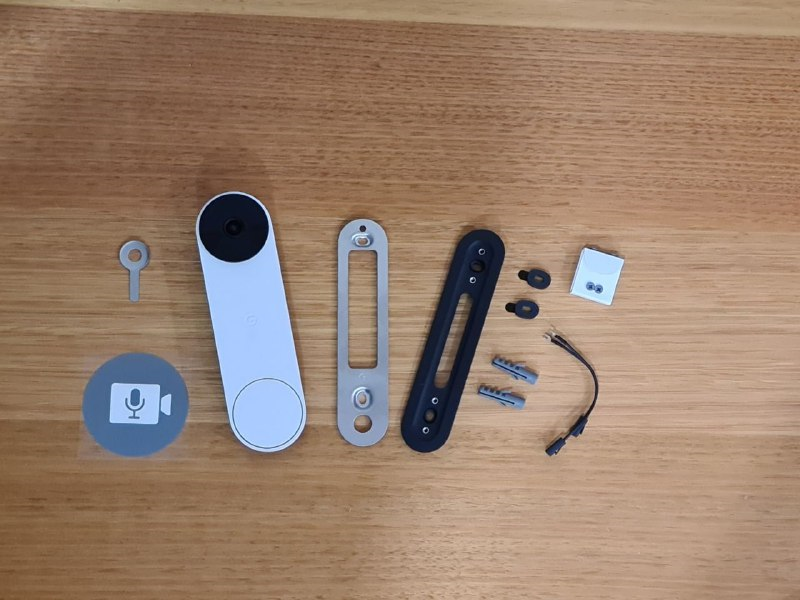
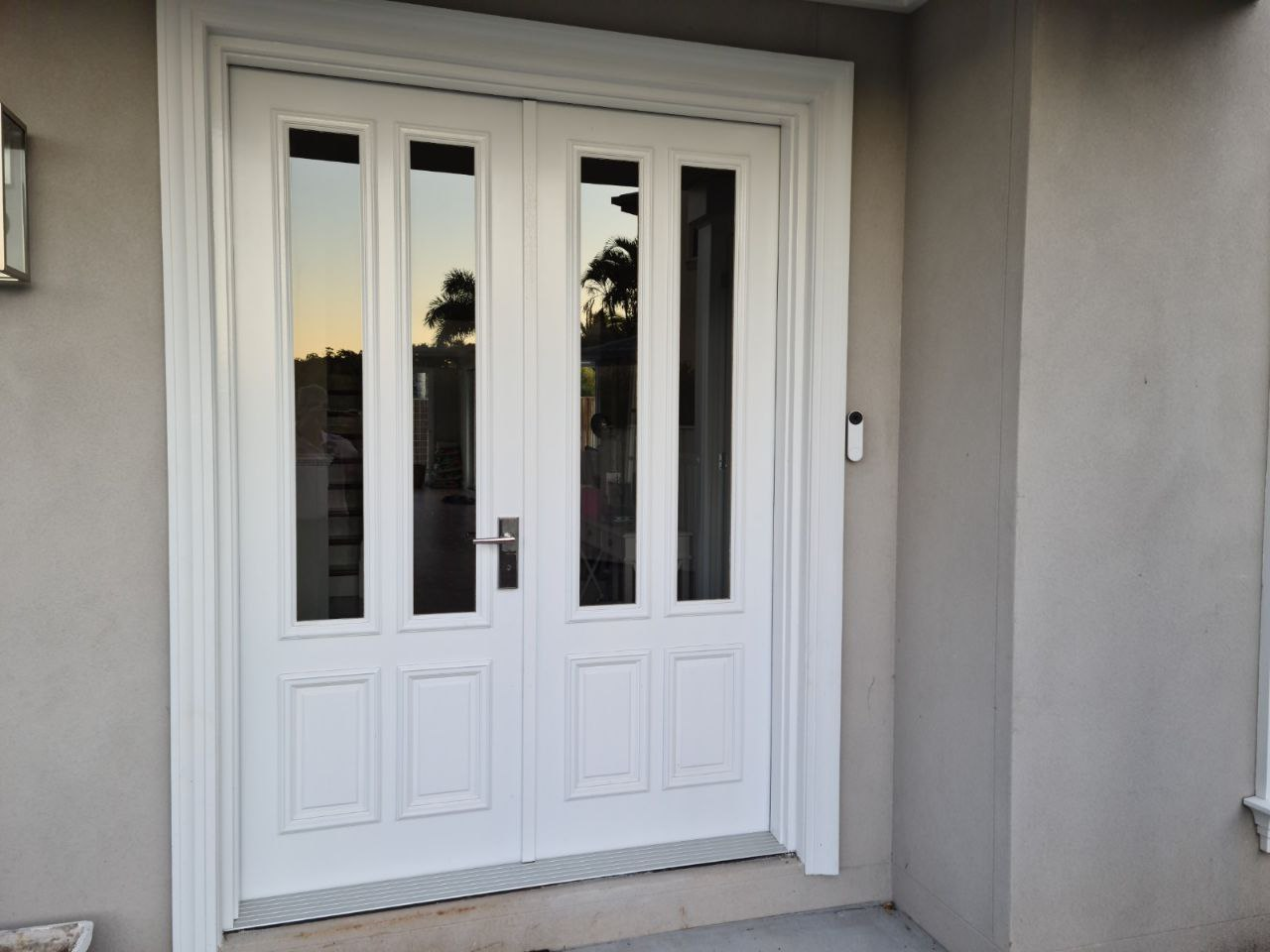

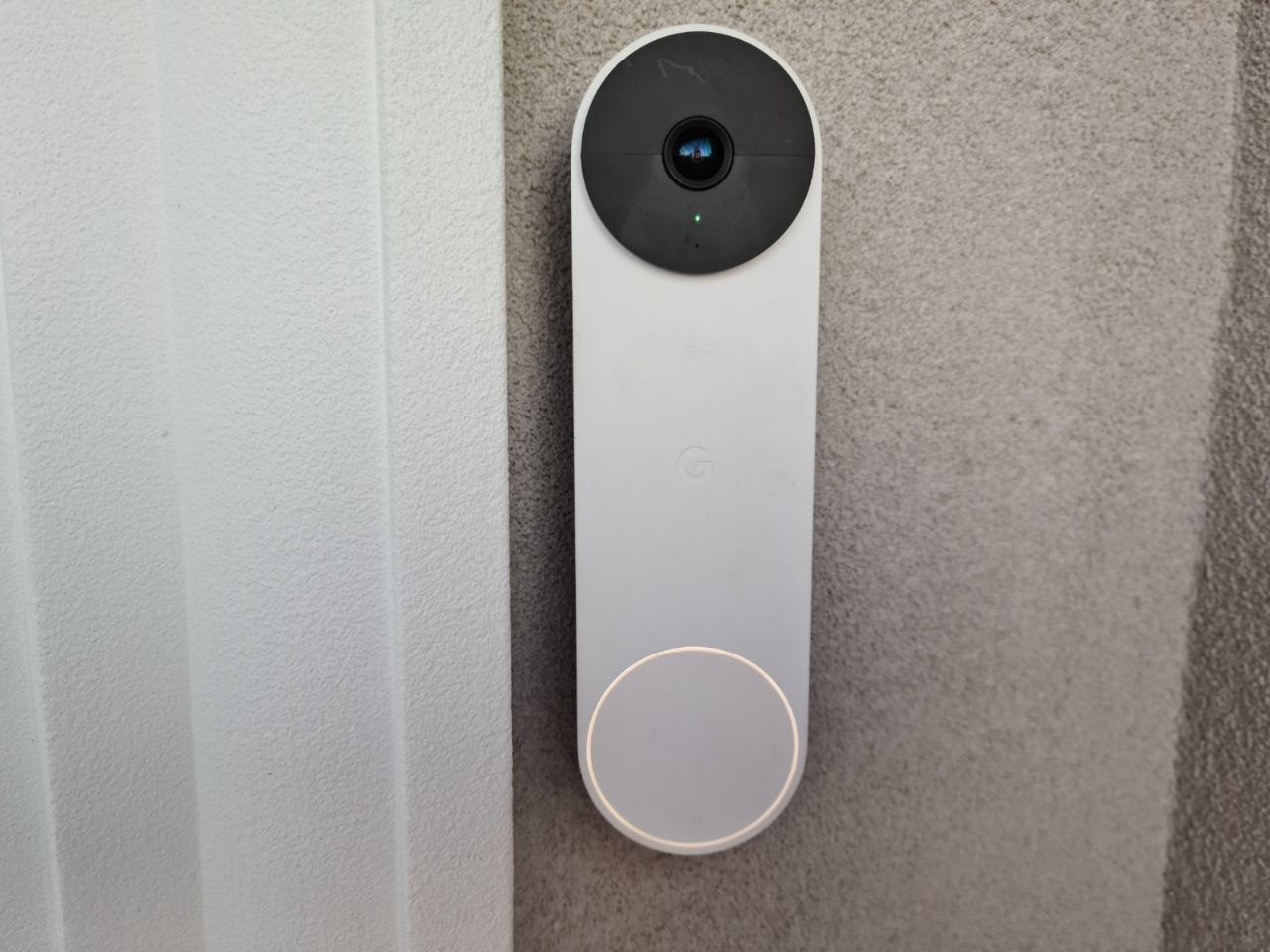
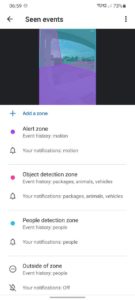
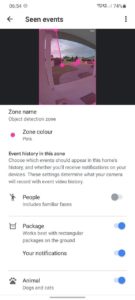




What do you do when the battery depletes? Do you take the unit off the wall and plug it into charger? How long does that take?
Hey letok,
I have it hard wired it in, however if you’re using battery it will last about 1.5 months form what others have experienced. To charge there is an included tool, you pop it off the mounting plate and charge it up.
Curious to know whether you can use these Nest devices with Google Workspace (aka G-Suite) accounts?
We don’t have a workspace account to test that with. Traditionally G Suite (Google Workspace) don’t have a good track record here.
https://support.google.com/googlenest/answer/7571892
“Note: Some Google Home app features are not available for Google Workspace (formerly G Suite) accounts. To access all Google Home app features available in your country, link a personal Gmail account instead.”
I’d say unless it specifically states Google Workspace in the tech specs, then always assume it doesn’t work.